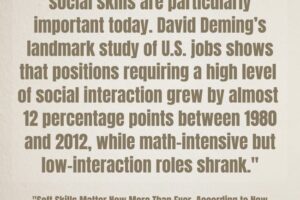
Abruptly Joining the Sandwich Generation
Just as we started winding down tuition payments for the kids, Mom needs long-term care.
And we’ve discovered that as difficult and family-unfriendly as higher education finance can be, long-term care is that much worse.
Mom is in her 80s and had some health events earlier this year that put her in need of round-the-clock care. She lives outside of Philadelphia, about three hours from my brother and five hours from me. When we lived in Iowa, it was about 17 hours, so this is better, but only in relative terms.
She has always been private and fiercely independent. After an ill-advised second marriage in the early ’80s, she decided that she’d had enough of that. She has lived alone ever since my brother left for college in the early ’90s. Luckily, she was practical enough to know that it’s one thing to live alone in your 40s and another in your 70s, so after she retired she moved into a facility that starts with independent living and offers stages of care from there. It’s not cheap, but she had saved assiduously, and the sale of her condo more or less covered the entrance fee. She didn’t start drawing Social Security until late, so relatively high benefits combined with her savings made it work.
But the round-the-clock care that abruptly became necessary roughly quintupled her monthly expenses, and the medical event left her unable to manage many of her own affairs.
We’ve been paying out-of-state tuitions for a while now. The Boy started in 2019 and The Girl in 2022. The 2022–03 year featured payments for both, which was particularly difficult, but we got through it. We’ve paid off TB’s student loans, and were able to get TG through without taking out any loans, so this coming spring semester should be the last of our tuition payments. We don’t regret them, but we won’t miss them, either. I smiled a bit when I realized that I’ve filled out my last FAFSA.
We’re uncommonly lucky in that Mom saved well and even had the foresight to take out a long-term care insurance policy. My brother and I have split the paperwork, which is ample and frustrating, but there’s at least the prospect of help. I’m hopeful that in the next month or so, it will actually start making payments. As any American knows, dealing with private insurance companies can be a task. I’m grateful that the prospect of help exists. (The fact that having a policy buys the “prospect” of help suggests quite a bit about the insurance market.)
Medicare doesn’t cover long-term care, and Medicaid requires liquidation of nearly everything and a standard of care lower than she deserves. In other words, private resources have to carry the entire cost.
College costs are real, but they’re easier in certain ways. For example, financial aid exists. Both of our kids were able to get scholarships to partially offset costs; there’s no way they could have gone where they did without those. The starting point comes with warning, and it has an endpoint that you can know in advance with a fair degree of confidence. Before they enrolled, I told both TB and TG that we were going to support them each through four years of college; if they decided to go on a five-year plan, year five would be on them. They got the message. TW and I set out a division of labor: We lived on my salary, and hers paid for college. Barring catastrophe, this academic year should bring an end to our college expenses. That should allow TW to devote more of her salary to retirement saving.
There’s no financial aid for long-term care. Scholarships for it don’t exist. There’s no good, cheap public option. Everything falls on the family.
That last paragraph represents the private repercussions of what are actually public choices. It doesn’t have to be this way. It’s this way because as a polity, we’ve chosen for it to be this way. We could choose differently.
The issues are more than financial. It’s hard to see Mom in a state of dependency for her daily needs. That has never been her style. Even having people around all of the time is hard on her, given how private she has always been. My brother and I have made lots of trips to manage her care, help her feel less alone, dig through paperwork, track down safe-deposit boxes, dig through storage units, move furniture and just be there for her. Those sacrifices are private, and necessarily so. We’ve seen her cry more in the past six months than in our lives up to that point; seeing someone as resolutely strong and competent as Mom weep at her own helplessness is rough. That’s our pain to face. When the inevitable end comes, the pain will be ours, and that, too, is how it has to be.
But the fact that long-term care costs are effectively left to families is a political choice. Yes, we Gen Xers are famously resilient, having grown up in the era of free-range parenting, latchkey kids and a series of increasingly nasty recessions. But resilience is not a policy. We’re lucky that Mom had the foresight to get private insurance when it was cheaper and that she saved as well as she did for as long as she did. And even with that, it’s difficult.
It has to be hard. But it doesn’t have to be this hard. As a policy, we could choose to do better. Without help, even the best-case scenario is rougher than it needs to be.
Source link



